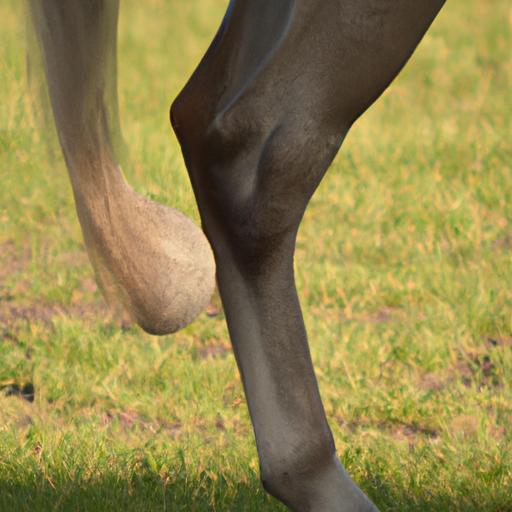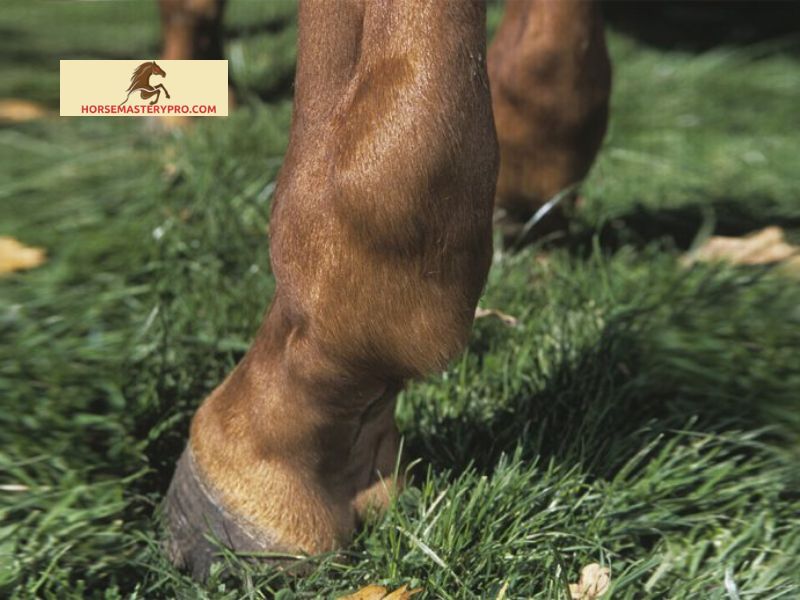Discover effective treatment options for wind puff on horses. Learn about veterinary interventions and medication choices to manage this condition.
- Introduction*
Have you ever noticed a swelling or puffiness in your horse’s legs? If so, you might be dealing with a common condition known as wind puff. In this article, we will delve into the nitty-gritty details of wind puff on horses, exploring its causes, symptoms, prevention, treatment options, and long-term care. So, saddle up and let’s dive into the fascinating world of wind puff!
Definition and Explanation of Wind Puff on Horses
Wind puff, also referred to as windgalls, is a term used to describe the swelling or puffiness often observed in the lower limbs of horses. It typically occurs around the fetlock joint, though it can also manifest in other areas such as the hocks. This condition is characterized by the accumulation of excess synovial fluid in the joint capsule, leading to swelling and puffiness.
Importance of Addressing and Managing Wind Puff
Addressing and managing wind puff is crucial for maintaining the overall well-being and soundness of your equine companion. Although wind puff itself is not usually painful or debilitating, it can be an indicator of underlying issues such as joint inflammation or strain. By understanding and managing this condition, you can potentially prevent further complications and ensure your horse’s continued comfort and mobility.
So, now that you have a basic understanding of wind puff on horses, let’s gallop forward and explore the causes behind this intriguing condition. In the next section, we will uncover the factors that contribute to wind puff and discuss the common triggers and risk factors associated with it. Stay tuned!
- words*
Causes of Wind Puff in Horses

Factors Contributing to Wind Puff
Wind puff in horses can be attributed to several factors, with the most common being excessive stress on the joint capsule and surrounding structures. Repetitive strain and overexertion, especially during intense physical activities such as jumping or racing, can cause the joint to undergo repetitive compression and extension, leading to the accumulation of synovial fluid.
Additionally, poor conformation or structural abnormalities in the horse’s limbs can contribute to the development of wind puff. Uneven weight distribution or poor alignment can place uneven stress on the joints, resulting in the swelling and puffiness characteristic of wind puff.
Common Triggers and Risk Factors
- Intense Exercise: High-impact activities or prolonged periods of strenuous exercise can strain the joints, increasing the likelihood of wind puff.
- Poor Hoof Care: Neglecting proper hoof care, such as failing to maintain balanced hooves or allowing excessive growth, can disrupt a horse’s gait and contribute to joint strain.
- Age and Activity Level: Older horses or those engaged in demanding physical activities are more susceptible to wind puff due to the increased wear and tear on their joints.
- Injury or Trauma: Previous joint injuries or trauma, such as sprains or fractures, can leave the joint more vulnerable to developing wind puff.
- Genetics: Certain horse breeds may have a higher predisposition to wind puff, highlighting the role of genetics in this condition.
By understanding the various causes, triggers, and risk factors associated with wind puff in horses, you can take proactive measures to prevent its occurrence or manage it effectively. In the next section, we will explore the symptoms and identification of wind puff, allowing you to spot the telltale signs and seek appropriate care. So, let’s continue our equine journey together!
- words*
Symptoms and Identification

Detailed Description of the Signs and Symptoms to Look Out For
Identifying wind puff in horses requires a keen eye and a thorough understanding of the associated symptoms. Here are some telltale signs to watch for:
- Swelling and Puffiness: The most apparent symptom of wind puff is the swelling or puffiness around the fetlock joint or other affected areas. This swelling may appear soft or firm to the touch, and it often subsides after exercise or turnout.
- Bilateral Presentation: Wind puff typically affects both limbs, although the severity may vary. If you notice swelling on only one side, it might indicate a different underlying condition and warrant further investigation.
- No Lameness or Pain: Unlike some other equine leg conditions, wind puff does not usually cause lameness or pain. Horses with wind puff typically exhibit normal movement and show no signs of discomfort during exercise or daily activities.
- Consistency and Size: The size and consistency of wind puffs can vary. In some cases, the swelling may be barely noticeable, while in others, it can be more pronounced. The puffiness tends to feel soft or spongy when gently palpated.
Methods to Identify Wind Puff in Horses
Accurate identification of wind puff is essential to provide appropriate care and management. Here are some methods to help you confidently diagnose wind puff in your horse:
- Visual Inspection: Regularly examining your horse’s legs can help you spot any changes or abnormalities. Look for swelling, puffiness, or any other visual cues that may indicate wind puff.
- Palpation: Gently palpate the affected area, feeling for any soft swellings or fluid-filled pockets. Remember, wind puff often subsides or reduces in size after exercise, so make sure to check the legs when the horse is at rest as well.
- Veterinary Consultation: If you suspect your horse has wind puff or if you are unsure about the diagnosis, it is always best to consult with a veterinarian. They can perform a thorough examination, including diagnostic tests if necessary, to confirm the presence of wind puff and rule out any other underlying conditions.
By familiarizing yourself with these symptoms and identification methods, you’ll be better equipped to recognize and address wind puff in your horse. In the next section, we will explore effective preventive measures to minimize the risk of wind puff. Stay tuned for valuable insights!
Prevention and Management Techniques

Effective Preventive Measures to Minimize the Risk of Wind Puff
When it comes to wind puff, prevention is key. By implementing a few proactive measures, you can significantly reduce the risk of your horse developing this condition. Here are some effective preventive techniques to keep wind puff at bay:
- Maintain a Balanced Exercise Routine: Regular exercise is essential for your horse’s overall health and joint function. However, it’s crucial to strike a balance between exercise and rest to prevent overexertion and strain on the joints. Gradually increase the intensity and duration of workouts, allowing your horse’s body to adapt and build strength.
- Proper Warm-up and Cool-down: Before and after exercise, always incorporate a thorough warm-up and cool-down routine. This helps prepare the muscles and joints for activity and aids in reducing any potential inflammation or swelling. Gentle stretches and controlled movements can go a long way in preventing wind puff.
- Appropriate Footing and Terrain: Be mindful of the surfaces your horse works on. Avoid excessively hard or uneven terrain that can place undue stress on the joints. Providing your horse with well-maintained and properly leveled arenas or paddocks can help minimize the risk of joint strain.
Proper Care and Management Practices to Avoid Exacerbation of the Condition
While prevention is key, it’s equally important to implement proper care and management practices to avoid exacerbation of wind puff. Here are a few tips to help you manage the condition effectively:
- Regular Monitoring and Inspection: Keep a close eye on your horse’s legs, especially after intense workouts or strenuous activities. Regularly inspect the lower limbs for any signs of swelling, heat, or discomfort. Early detection can aid in prompt intervention and prevent further aggravation of wind puff.
- Maintain Optimal Weight: Excess weight can put additional strain on the joints, increasing the likelihood of wind puff. Ensure your horse maintains a healthy weight through a balanced diet and appropriate exercise regimen. Consult with a veterinarian or equine nutritionist to create a suitable feeding plan tailored to your horse’s needs.
By implementing these preventive measures and practicing proper care and management techniques, you can greatly reduce the risk of wind puff and ensure the well-being of your equine companion. In the next section, we will explore the available treatment options for wind puff on horses. Let’s continue our journey towards equine wellness!
- words*
Conclusion
Now that you have a comprehensive understanding of wind puff on horses, you are well-equipped to address and manage this condition effectively. Remember, early detection and appropriate treatment are key to ensuring your horse’s comfort and well-being.
Throughout this article, we explored the definition of wind puff and its significance in horse health. We identified the causes, symptoms, and risk factors associated with this condition. Additionally, we discussed preventive measures to minimize the risk of wind puff and the available treatment options, including veterinary interventions and medication.
As responsible horse owners, it is our duty to monitor our equine companions closely and take necessary steps to prevent and manage wind puff. Regular veterinary check-ups, proper exercise routines, and a balanced diet can greatly contribute to the overall health and soundness of your horse.
Remember, each horse is unique, and their needs may vary. Consult with your veterinarian to develop a tailored treatment plan that suits your horse’s specific condition and requirements.
At horsemasterypro.com, we are committed to providing you with valuable insights and resources to enhance your journey as a horse owner. Stay tuned for more informative articles and expert advice.
Take charge of your horse’s well-being and let’s continue to build a strong bond with these majestic creatures.
horsemasterypro.com


